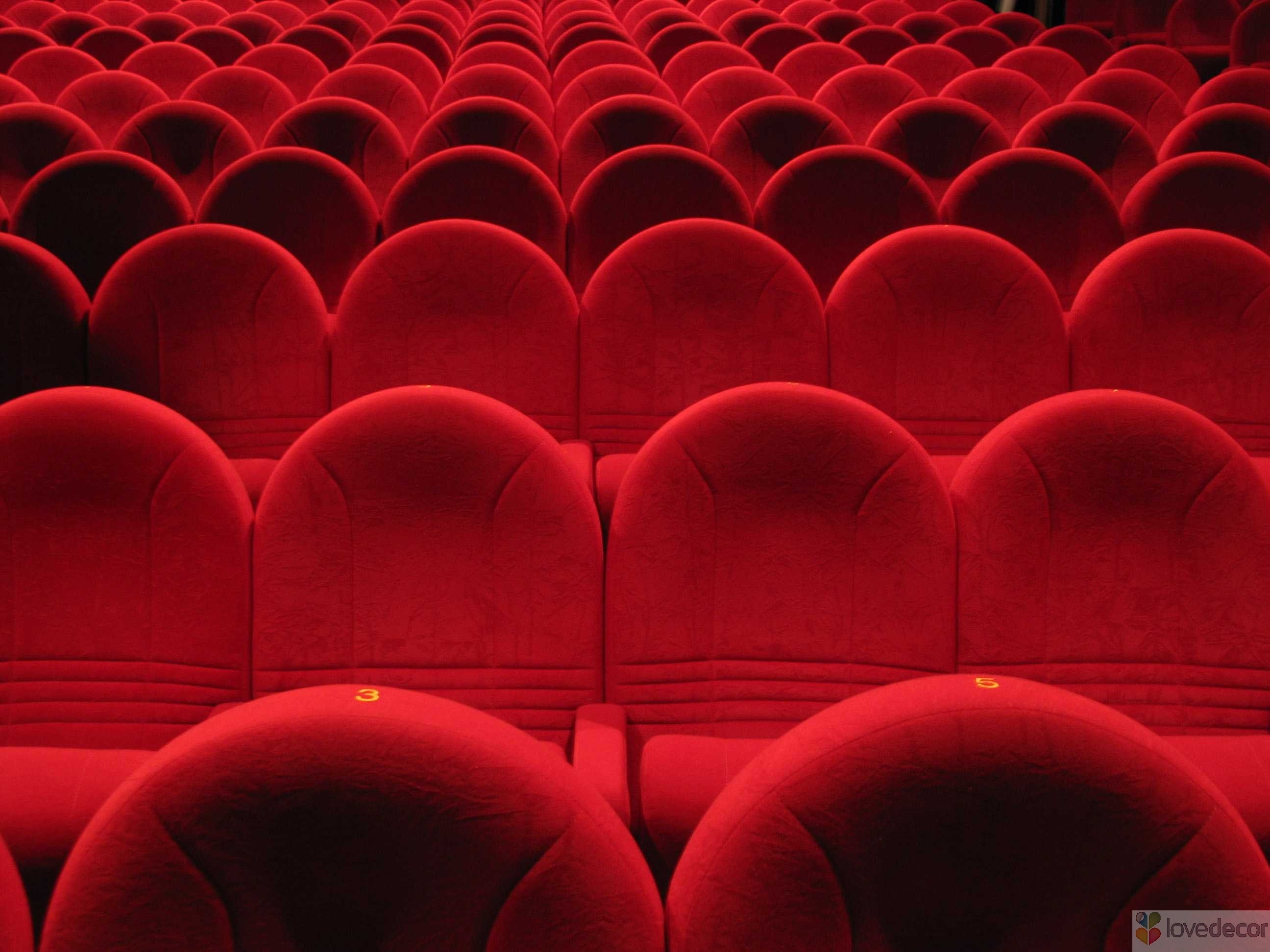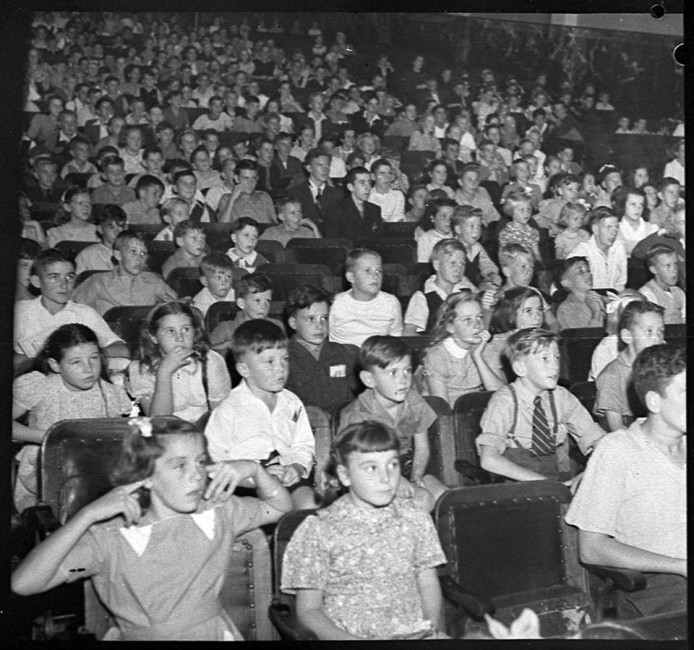
The recent news that one of London’s most notorious cineplexes is being turned into a massive central cinema complex favouring independent cinema from around the world illustrates the point that this is a strange and wonderful time for our picturehouses.
As a collective audience we’re caught on shifting sands. Some of us are purists, rooted firmly in our almost monastic preferences, others are eager to see which dimension is next to be plumbed, which other sense can be tickled on our weekly trip to the flicks.
On HeyUGuys we’ve run stories and reports from event screenings, Al Pacino talked to us for a good while outside the premiere of his Salome double bill, we interviewed the stars from Billy Elliot the Musical (LIVE!) and the bumpy road to Secret Cinema’s Hill Valley was worth it in the end. Cinema, as we know it, is changing.
What links these events is a new momentum to change the way we experience films. The Salome premiere was followed by a live Q&A which was screened to cinemas, the Billy Elliot event was also screened across the country and the Secret Cinema event welcomed thousands of BTTF fans to essentially watch a film in fancy dress. This is a small snapshot of the roadmap of the modern multiplex; much is being done to counter the common complaint that there’s little choice at the cinema.
With cinemas constantly looking for ways to improve the experience, a monthly fee for unlimited movies in Cineworld’s case, it’s time to explore where the modern multiplex is moving towards. What demands from the audience will be acquiesced to, and what impact will the ever-changing face of entertainment technology have on our enjoyment of the cinema experience.
Now more than ever the multiplex dominates the cinematic landscape and the game is being played very safe. But with the landscape moving so quickly here are a few ways we might see things change in our local cinema.
Sporting events and TV on the big screen will become a regular thing.
With the finals of the World Cup and Wimbledon claiming space in our multiplexes this year it’s easy to imagine that the practise will become commonplace soon. The communal nature of the cinema (specifically the fact that you’re there with strangers) adds a special element to the enjoyment of a film, and it would do the same for a Cup Final.
We are also destined for a curious callback to a time when the cinema was the only place to see the news, or to dive in for a dose of Saturday morning cartoons. The recent event screenings of the premiere and specials of Game of Thrones and Doctor Who prove that there’s an audience willing to pay to see these programmes on the big screen, and this is just the beginning.
Speaking to the Independent last year David Lynch, a noted and passionate advocate for the cinematic experience, said,
Even if I had a big idea, the world is different now. Unfortunately, my ideas are not what you’d call commercial, and money really drives the boat these days.
I don’t have a clue what I’m going to be able to do in the world of cinema.
Lynch recently announced that he would be returning to writing and directing with the long awaited third series of his landmark TV series Twin Peaks. What’s the betting that when it airs in 2016 its first episode will be broadcast in cinemas across the world, perhaps it’ll even have its own premiere like the recent Doctor Who series?
Are we really that far off from cinemas selling series passes to groups of eager fans to watch every episode in a cinema? With Twin Peaks’ nine episodes, Game of Thrones’ ten episodes per season and so on it could work well and inner city cinemas could easily fill a screen each week with eager fans desperate for a communal experience beyond the Twitter stream.
Event cinema will become Experience Cinema.
We’re already seeing the rise of Event Cinema across the country, the aforementioned Back to the Future event being the most famous (and infamous) thus far. Thanks to an aggressive (and necessary) replacement scheme there are now digital screens in 98% of cinemas, leading to a vastly different landscape in terms of what can easily be shown.
Over the last few years we’ve seen documentaries shot specifically for the IMAX cinemas, opera from the ENO, live ballet from the Bolshoi, the reunion show of Monty Python, Stephen Fry’s one man show to promote his new book, special Bollywood seasons and so on and on. The main cinema chains are also getting involved with local film festivals; Aberdeen is running currently and Sheffield’s DocFest is a particular highlight each year. There’s always more going on in your local cinema than it first appears.
Films will stay on screens longer.
Speaking with his contemporary and collaborator George Lucas Steven Spielberg believed ‘(The movies) will sit in the theaters for a year, like a Broadway show does. That will be called the ‘movie’ business..‘ and I well remember Spielberg’s evergreen classic E.T. being like a cinematic boomerang in the early 80s. Years later the enormous success of Titanic would see James Cameron’s film in cinemas for months after its initial release.
That, as they both acknowledged in their conversation, Spielberg and Lucas struggled to find a decent foothold in the multiplex for their projects Red Tails and Lincoln while James Cameron’s Avatar was released, extended then re-released speaks volumes. It’s spectacle cinema at its most stark and like any industry cinemas will follow the money, which is why we have three Avatar sequels heading our way.
It is also becoming common practise to re-release films which did well just before a DVD/Blu-ray release, likewise you can now book a Hunger Games films triple bill with Mockingjay Part 1 in cinemas.
IMAX and 3D films will continue to dominate.
The campaign to get audiences to flock to the IMAX showings of Christopher Nolan’s Interstellar have already begun. Ridley Scott’s Prometheus was ushered into cinemas with its 3D version firmly pushed to the fore with Scott’s proclamations of never making a 2D film again echoed the marketing sentiments.
Not only can cinemas charge more for but directors are understandably pushing for these formats to be more widely used. Anything to help thwart the piracy menace, and to recreate the feeling of the cinema trip as something you simply cannot experience anywhere else.
Audiences will become increasingly fragmented, and increasingly catered for.
Screenings for parents with babies, or younger children are commonplace (and essential…), we have Autism-friendly screenings, subtitled screenings and so on. This is a fine advancement and one which may point to the future.
It’s encouraging that the 15-24 years old demographic make up the majority of our cinema audiences look to the implementation of Over 30s screenings and Phone-free screenings (and the inverse – Tweet-a-long screenings are a marketing manager’s dream). You’re a fickle audience and the cinema chains are paying attention.
Every time a film screens in a cinema, be it at a riverside arthouse complex with salty mineral water and vegetable popcorn or the Michael Bay popcorn explosion of a rural multiplex, there is a chance that someone in that audience will fall in love – just as we all did. While it is a business at the close of day it’s worth remembering that everyone does it for the love of it.
This is part of the magic of film – that there exist possibilities beyond the obvious, just waiting for you to catch them.
Cineworld have come up with this handy infographic to see how times have changed in the last century, follow them on Facebook here, and on Twitter here.
Old Cinemas vs Multiplexes – An infographic by Cineworld.
Share this infographic on your website
Click on the code below then copy and paste it into your website.














